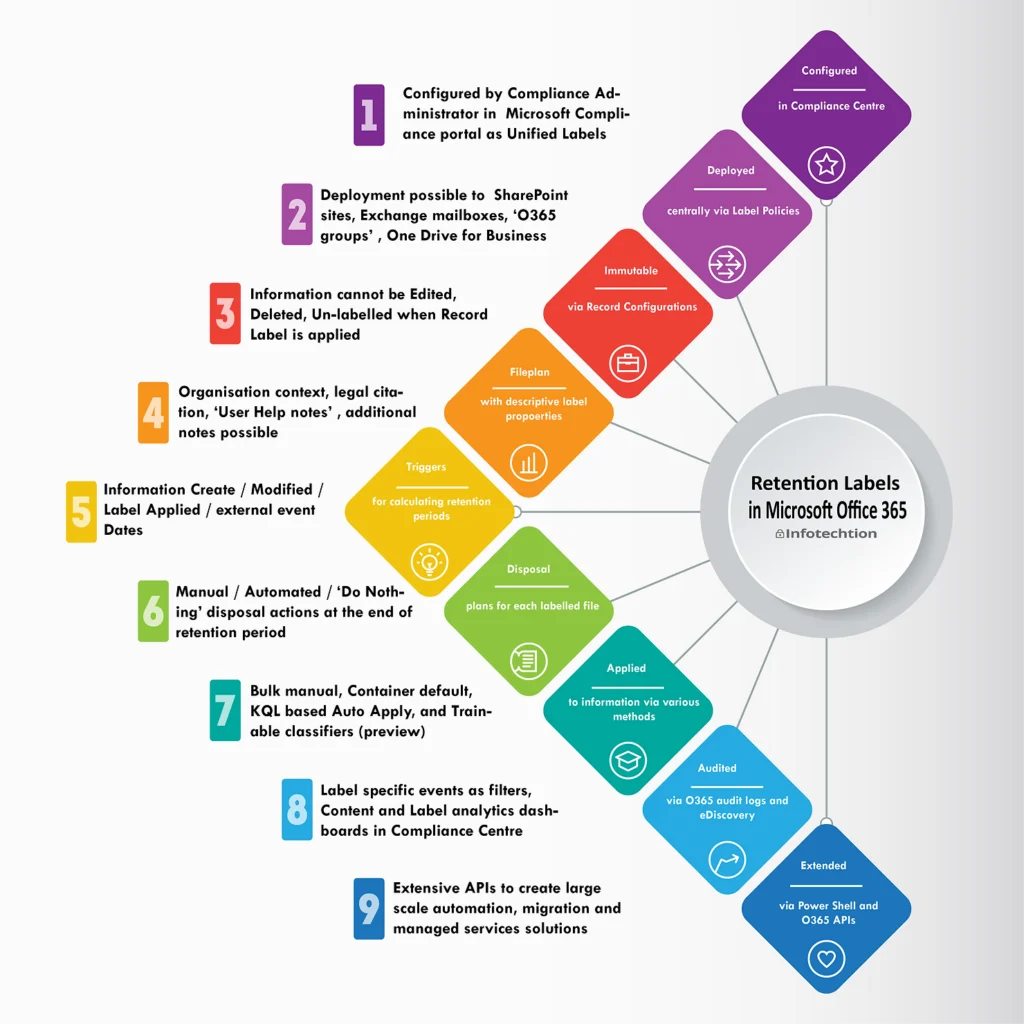![]()
Updated:Sep 6, 2020
Many organizations still try to use paper-principles to manage electronic records. They tell staff to identify, capture, and classify records, and are then surprised when this doesn´t happen. Staff are often too busy doing their job than worrying about compliance. It´s therefore time for change since compliance needs to be by design.
I learnt at a Web 2.0 conference many years ago that there are two success factors for designing a good website: 1) Don´t make me read, 2) Don´t make me think! In records management, many still try to do the opposite.
Most enterprises didn’t find SharePoint on-premise good enough for managing electronic records, but this is different for Office 365. The key is not SharePoint Online, but using Microsoft Information Governance / Advanced Data Governance (ADG) to simplify or automate records management based on content, metadata, and/or machine learning. This rely on auto-applying retention labels, and here is a summary of this for Office 365:

Achieving Compliance by Design
Here are some of ways you can automate records management in SharePoint Online with Microsoft Information Governance / ADG:
1) Auto-apply retention or record labels based on…
Sensitive Information Types – When you create auto-apply retention labels for sensitive information, you see the same list of policy templates as when you create a data loss prevention (DLP) policy in Office 365. Each policy template is preconfigured to look for specific types of sensitive information. For example, the template shown here looks for U.S. ITIN, SSN, and passport numbers. These templates can be further extended to identify specific information specific to your organisations information or industry requirements.
Content – ADG can be used to auto-apply retention labels based on words or phrases in the file. This could be detailed queries that include search-operators like AND, OR, and NOT, e.g. Contoso, invoice, invoice address.
Metadata – Configure ADG to automate records management based on mandatory metadata added by users to describe information, e.g. NDA as document type, and document status set to final. Users then don´t have to worry about records management since this happens automatically based on the metadata.
Machine learning – Microsoft is just about to introduce (currently in preview) new machine learning to automate records management. Admins train the ‘machine classifiers’ with sample documents (known as ‘seed data’) before testing the accuracy against a bigger sample with relevant and non-relevant information. The solution is very easy to use, and admins can increase the accuracy by reviewing the results and improve accuracy by telling the machine if information is relevant vs not relevant.
2) Applying a default retention or record label to all content in a SharePoint library, folder, or document set
Users can apply a default retention label to a SharePoint library (Site Owners), folder / document set (Members), so that all documents in that location get the default retention label. This immediately applies a retention or record label to the content stored in this library, folder, or document set (and locks the file from editing and deletion if using a record label), while the above auto-apply functionality based on sensitive information types, content, metadata, or machine learning may take 7 days before the label is applied (and locks the file if using record labels).
But is this good enough for you? One of our global clients with almost 40,000 users in a highly regulated industry tested last year several of the leading ECM and Office 365 integrations to identify the best approach for managing content and records in Office 365. Microsoft Information Governance / Advanced Data Governance (ADG) was the clear winner as it was native and the most integrated of all the solutions. This allows for “compliance by design” at multiple levels of depth. Users just describe what they working on (e.g. tag a file as NDA), and ADG then sets the right retention and disposition automatically. Their vision is now to replace existing legacy content management system with SharePoint Online and ADG.
Here are some ways we can help you manage information on the Office 365 platform:
Opportunity Assessment
Strategy
Technology Roadmap
Governance Framework



